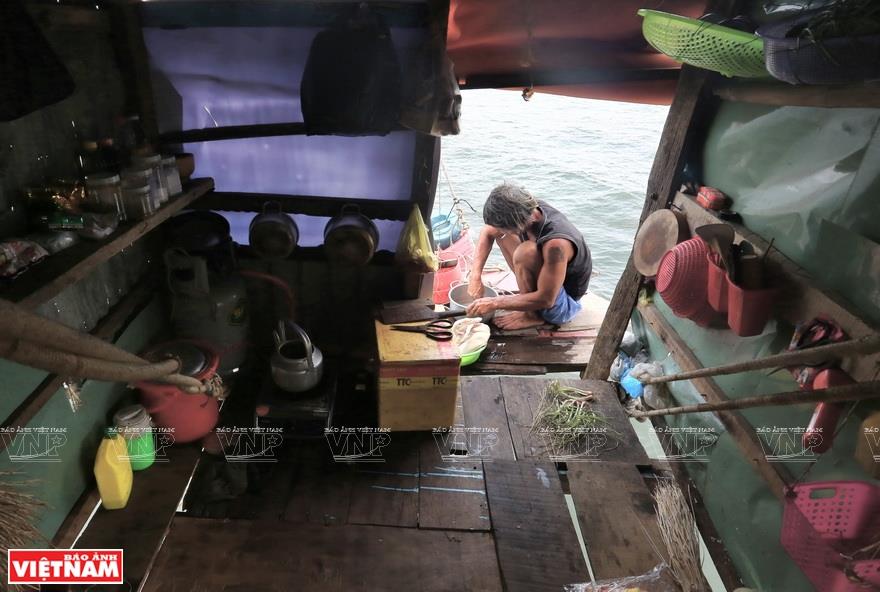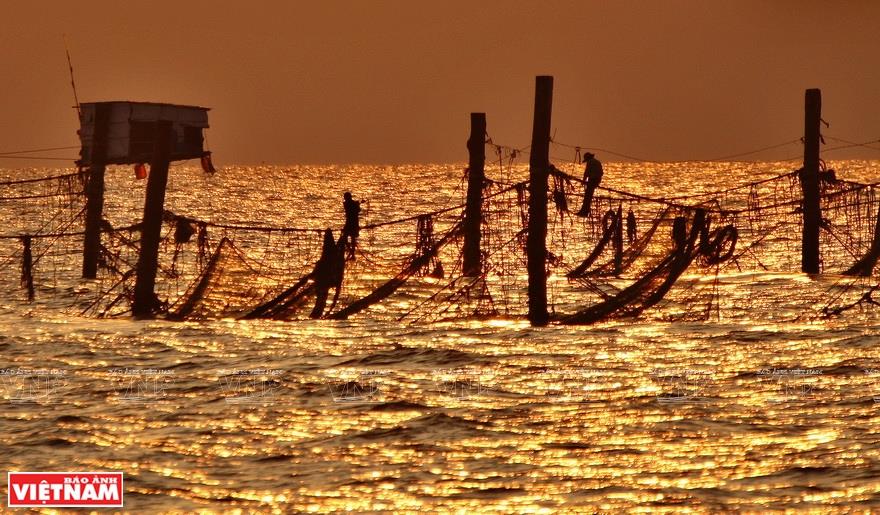 |
|
For years, fishermen in Vung Tau have caught fish using nets strung between wooden or concrete poles which are fixed into the seabed at a depth of 15-16 meters (Photo: VNA) |
 |
|
The stilt houses are built above the sea on those poles, between 17-18 meters high, which are connected with one another via rope ties (Photo: VNA) |
 |
|
Fishermen stay in the stilt houses to monitor the currents to decide when to pull the nets. The only way for the fishermen to move from one stilt house to another is on the rope ties (Photo: VNA) |
 |
|
The fishermen walk on rope ties to lay fishing nets at sunset (Photo: VNA) |
 |
|
The fishermen are regarded as rope dancers at sea (Photo: VNA) |
 |
|
This traditional fishing method is unique in Vung Tau in particular, and in south Vietnam in general (Photo: VNA) |
 |
|
(Photo: VNA) |
 |
|
The catches are harvested in early mornings (Photo: VNA) |
VNA
 Walking on beaches in the southern coastal province of Ba Ria-Vung Tau, visitors will see local fishermen stay in stilt houses to catch fish using an original method which has existed for decades.
Walking on beaches in the southern coastal province of Ba Ria-Vung Tau, visitors will see local fishermen stay in stilt houses to catch fish using an original method which has existed for decades.